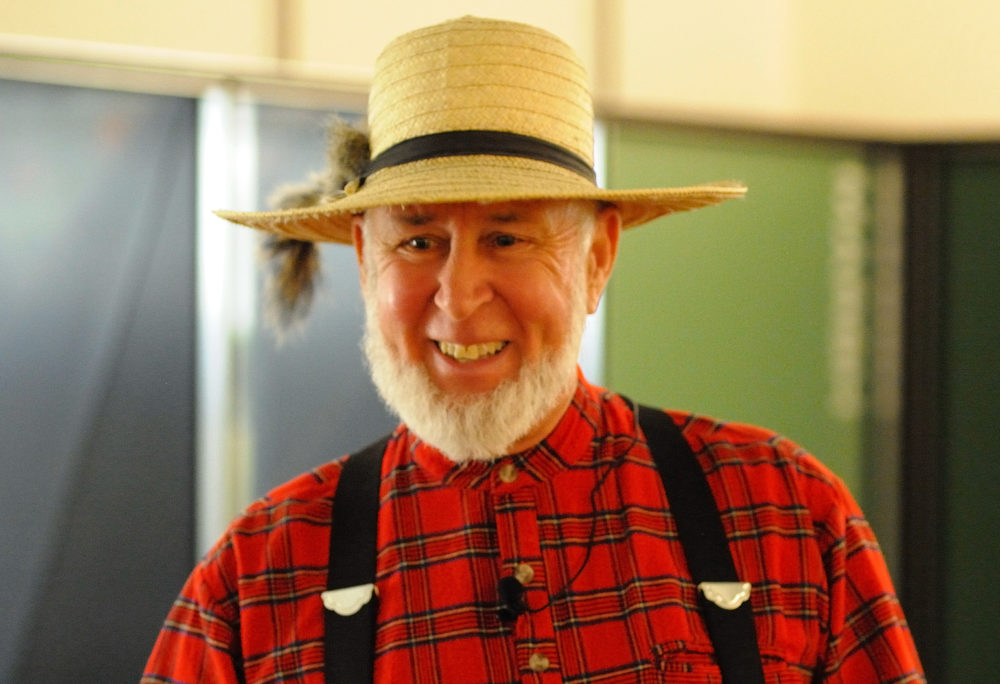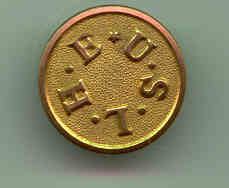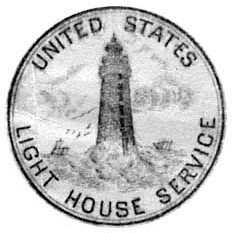ORGANIZATIONAL CHRONOLOGY – U.S. LIGHTHOUSE SYSTEM
Pre-1789 Lighthouses and unlighted “beacons” were built by some of the colonial governments and were under the jurisdiction of the individual colonies.
1789 – The twelve then existing lighthouses (six of them in Massachusetts) that had been built by the individual colonies were taken under federal jurisdiction by an act of the First Congress. It would take several years, until 1795, before individual state legislation would effect the actual transfer of all of these sites and structures. The term “Light-House Establishment” was used to refer to this new federal agency.
1789-1820 – Lighthouse administration was under the Dept. of the Treasury, and various Treasury officials supervised the system during these years. The term “Light-House Establishment” continued to be used to refer to the overall organization.
1820 – 1852 During this period the Secretary of the Treasury assigned the “care and superintendence of the lighthouse establishment” to an official named Stephen Pleasonton. Pleasonton’s title was “Fifth Auditor of the Treasury”. He, with the help of a handful of clerks, would oversee the system for three decades. In the latter years, military engineers would assist with lighthouse placement, design and construction . The term Light-House Establishment continued to be used to refer to the system as a whole.
1851 – Following years of complaints by the shipping industry about the poor quality of American lighthouses, Congress appoints a committee to review all aspects of lighthouse operation and administration. A scathing report is submitted in 1852, and drastic changes soon follow.
1852 – An eight-person Board, made up of six Army and Navy engineer officers and two civilian scientists is established. Called the Light-House Board, this group of men, under the supervision of the Secretary of the Treasury, the ninth member of the board, oversaw all aspects of the lighthouse system for the next 58 years.
1852 – 1903 Under the direction of the Light-House Board, the agency itself continued to be called the Light-House Establishment. The initials U.S.L.H.E. are found on implements and structures from this era. The term Lighthouse Service, although it had been informally used for decades, began to creep into more common use. Both terms were often used, even in official reports and correspondence. [Example from the 1902 “Instructions To Keepers” – Chapter V Para. 191 No person employed in, or in any way connected with, the Light-House Service, will be permitted to supply provisions or rations for the officers or crews of Light-vessels or any Light-House Establishment vessel, or of any vessel employed in the Light-House Service by charter or otherwise.”
[2nd Example from the same document “Chapter II Para. 121 Whenever an officer of the Light-House Establishment or a member of the Light-House Board is afloat in a vessel of the Light-House Establishment, the light-house flag shall be shown at the mainmast head. . . . . Light-vessels shall display colors and light-house flag to all passing vessels of war and vessels of the Light-House Service.”[See Footnote below]
1903-1910 The Light-House Board and the “Establishment” that it oversees, is removed from the Treasury Department and assigned to the newly created Department of Commerce and Labor.
The illustrations above show the button used on lightkeepers’ uniforms circa 1890, the letters “U S L H E” standing for the U.S. Lighthouse Establishment. The second shows the official logo of the “Lighthouse Service” as the organization later came to be called.T
1910-1939 The Light-House Board is dissolved effective July 1, 1910, and a civilian controlled Bureau of Lighthouses is formed within the Dept. of Commerce and Labor. The unofficial name Lighthouse Service begins to be more commonly used, and many items from this era are marked U.S.L.H.S. The name Light-House Establishment slowly ceased to be used. [A 1919 letter from the Secretary of Commerce to the Secretary of the Treasury requesting lighthouse appropriation for the fiscal year to end June 30, 1920, is on letterhead that says, “Department of Commerce Lighthouse Establishment.” This is nine years after the creation of the Bureau.]
1913 – The Department of Commerce and Labor was divided into separate Commerce and Labor Departments. The Bureau of Lighthouses became part of the Department of Commerce.
1915 The “Revenue Cutter Service” and the “Lifesaving Service” were combined to form the U.S. Coast Guard.
1939-1950s Under a government reorganization plan of President Franklin Roosevelt, the Bureau of Lighthouses within the Commerce Department was abolished, and the organization was merged into the Coast Guard. Many of the older keepers chose to retire. Those that remained were given the choice of remaining civilian employees, or of joining the Coast Guard with appropriate military rank.
1950s-Present The Coast Guard began to automate lights and fog signals to operate without the need of “keepers”. As lights were automated, unneeded residences and associated buildings of the stations were often demolished. Often the light towers themselves were removed. Public outcry eventually halted wanton destruction. New, modern navigational lights often continued to be exhibited from the old light towers, or from newly built nearby towers. Where these exist, the Coast Guard remained and remains responsible for the lights and/or fog signals.
1970s – Present The Coast Guard began to transfer lighthouses and remaining “light station” structures to park agencies, state/local governments, or to non-profit “Friends” groups who will assume maintenance responsibility for the structures and grounds. USCG generally retains control of, and responsibility for, any light, radio signal, or other actual navigation aid.
2000 – Congress passed the National Lighthouse Preservation Act which regulates the transfer of lighthouses/light stations to qualifying organizations. Modeled at least in part on the highly successful “Maine-Lights” program, this act has resulted in the responsible preservation of many lighthouses that might otherwise have been lost.
=============================================================
Postscript: The term “Lighthouse Service” has been found in correspondence as far back as the late 1790s. The use of the term “Lighthouse Establishment“ in official correspondence has been found as late as 1919, nine years after the creation of the Bureau of Lighthouses in the Dept. of Commerce and Labor (later Dept of Commerce).
The term “Lighthouse Service” is found in correspondence as far back as at least 1795. A September 26, 1795, letter from Tenche Coxe, Commissioner of Revenue in the federal Treasury Department, to a Mr. Habersham, Collector of Customs in Savannah, Georgia, states: “I am sorry to observe that such delay has not occurred in any instance in the Light House SERVICE.” A year later, a second letter from Coxe to Habersham states: “I wrote to you . . . Concerning your long unsettled accounts and other matters essential to the orderly and beneficial execution of the Light House SERVICE.” [ Capitaliztion mine – JTG ]
However, the proper reference to the overall light house organization is confirmed in another letter from Coxe to Habersham dated October 6, 1795, in which Coxe says: “It appears than in March 1790 the late Secretary of the Treasury in the course of necessary duty reported to the President that no information concerning the Light House ESTABLISHMENT was received from Georgia . . . .“ [Capitalization mine – JTG ]
Quotes from letters are taken from a Thomas Tag article regarding the Tybee Island, GA, lighthouse in the November 2011 (Volume XXVIII Number 1, 2011) issue of The Keeper’s Log.
[ This article, as above, also appeared in the Fall 2011 issue of “The Keeper’s Log.” ]
For additional information on this topic, visit the “Lighthouse Primer Part 2” page.


